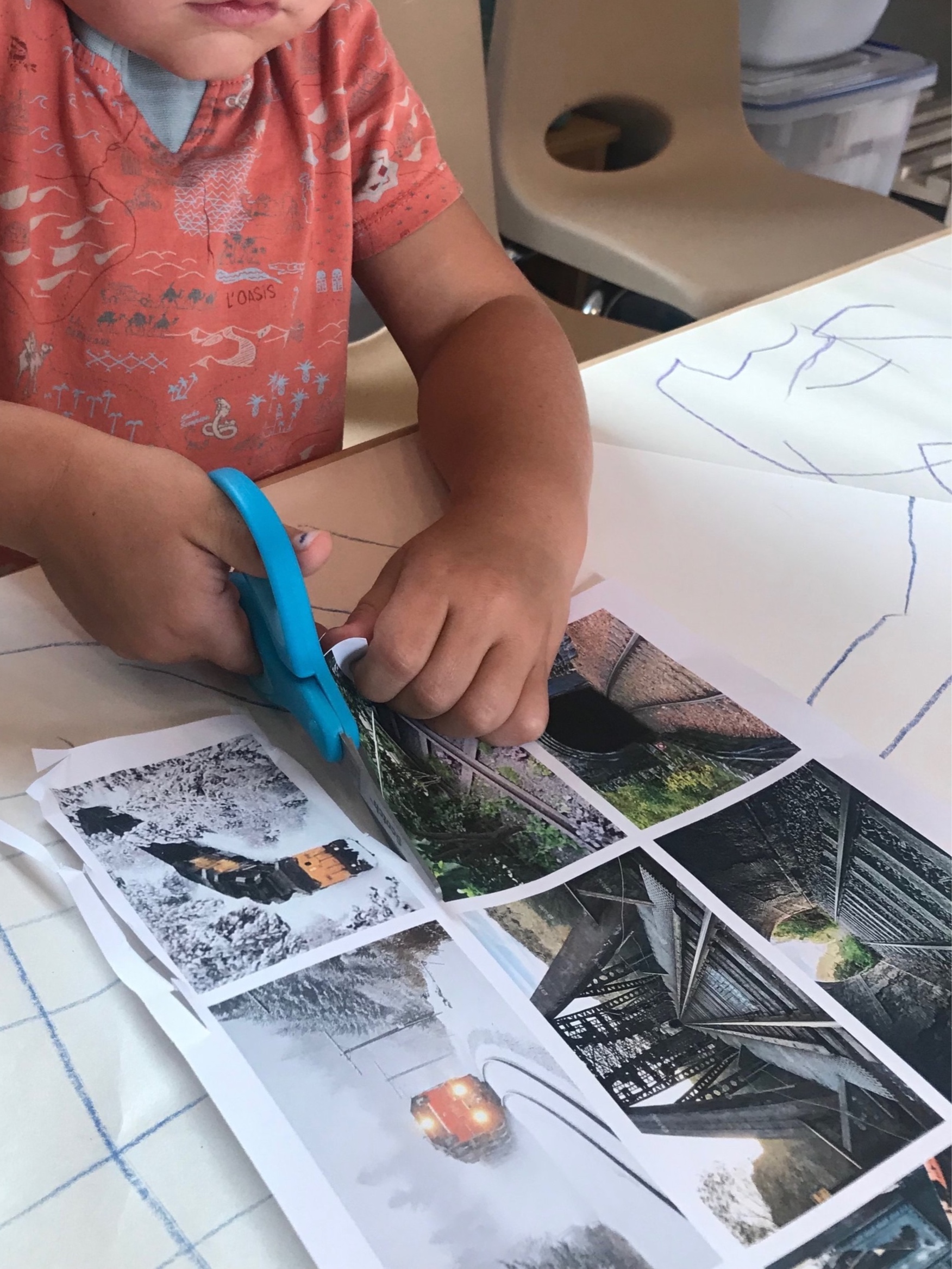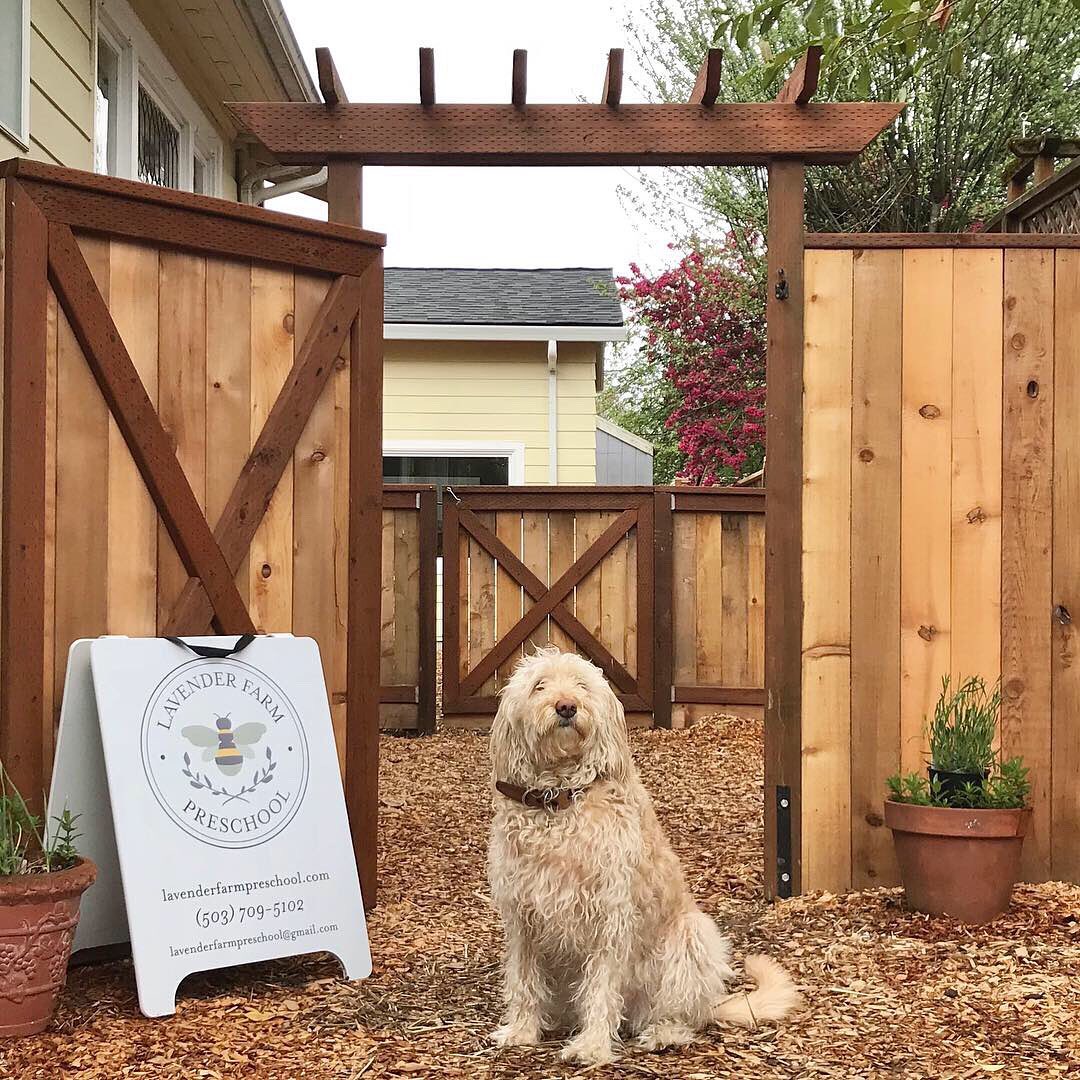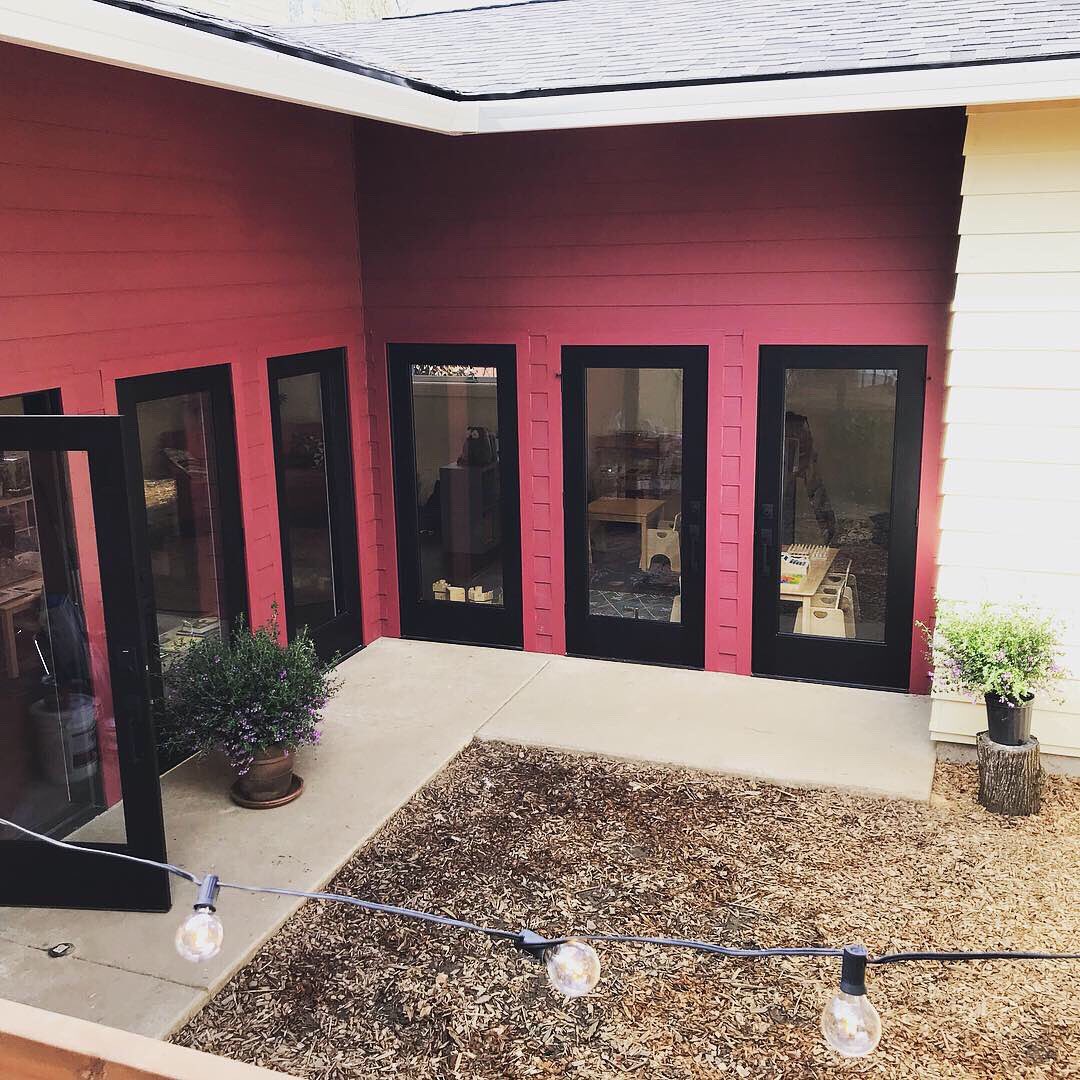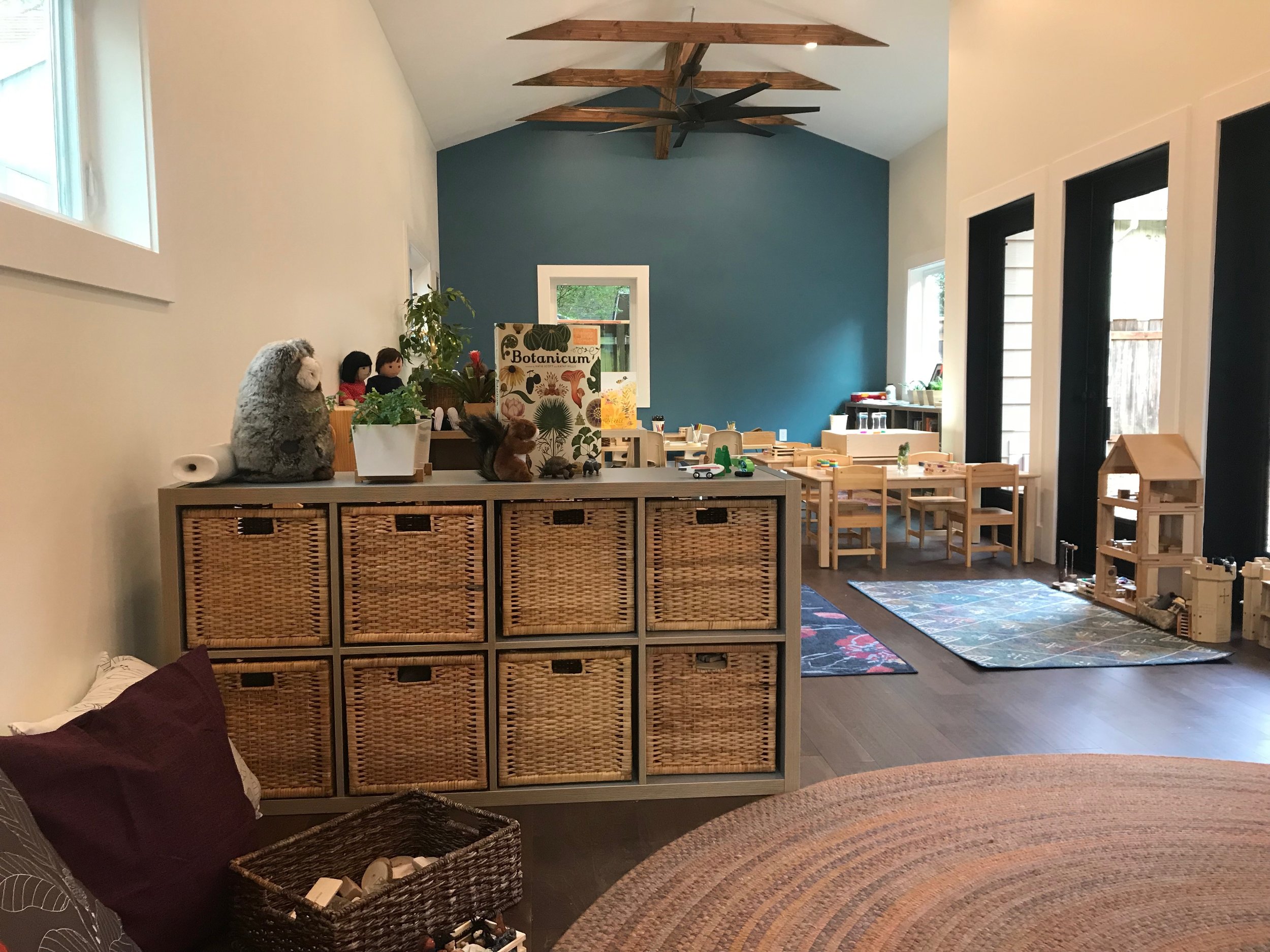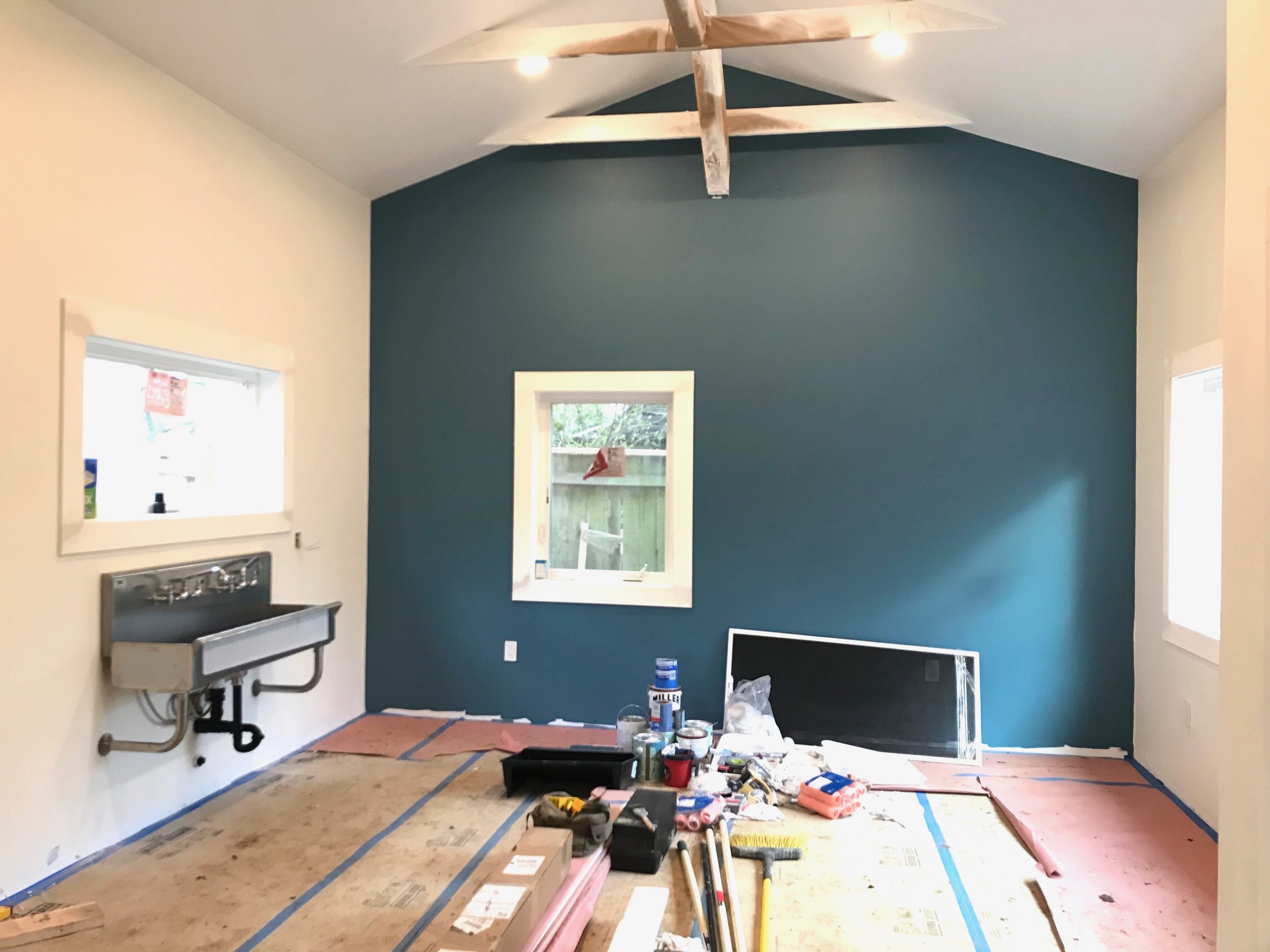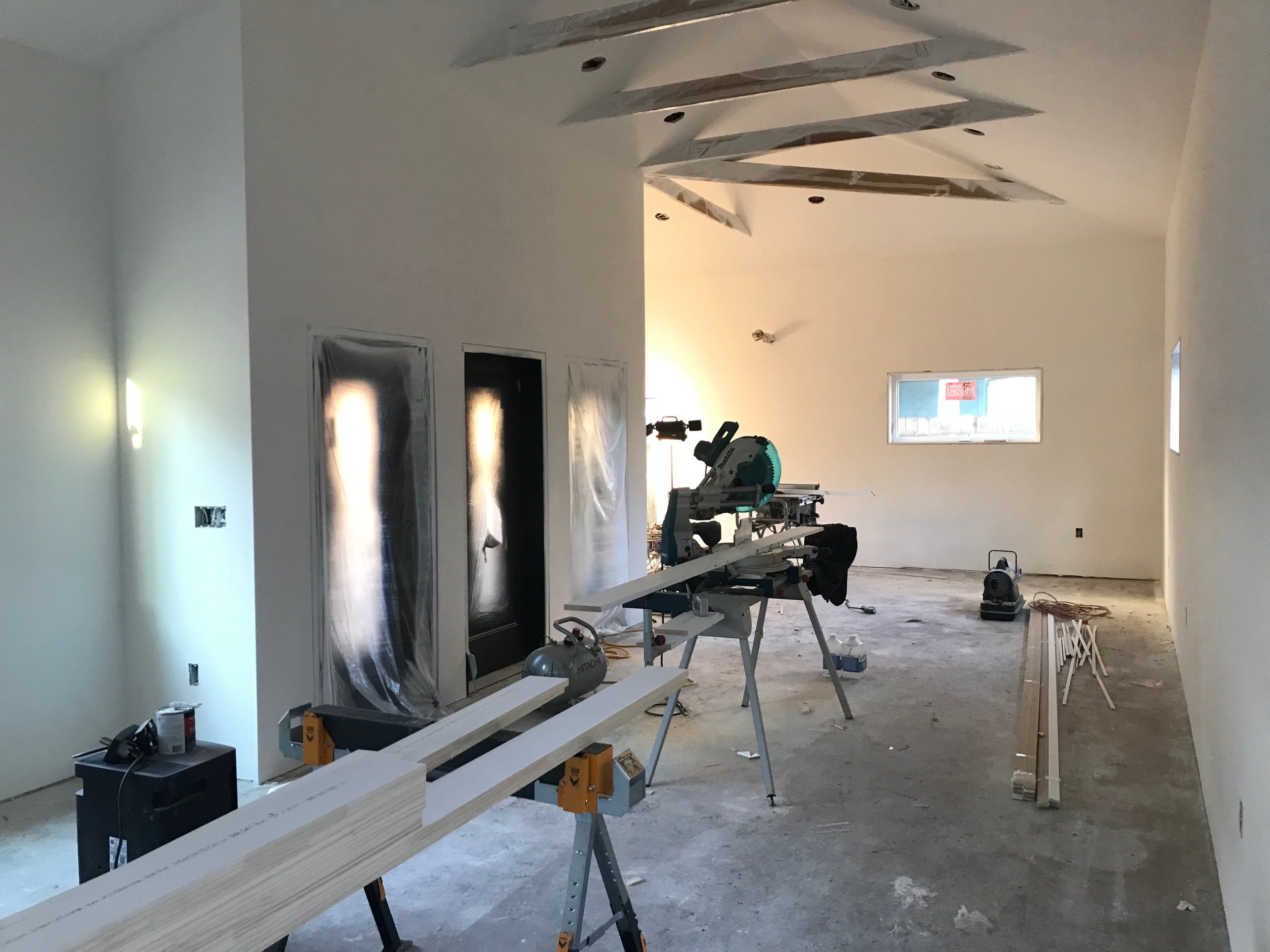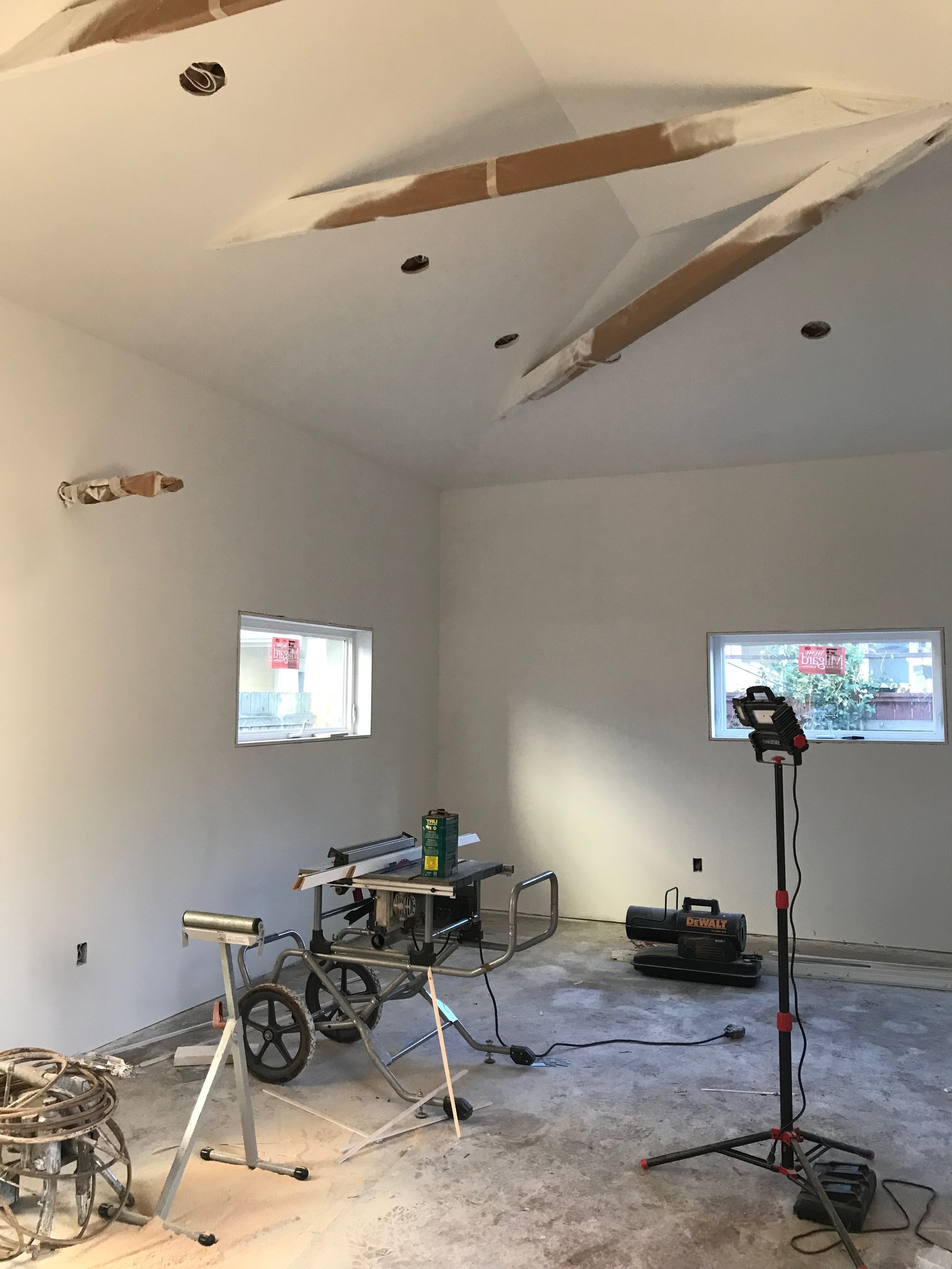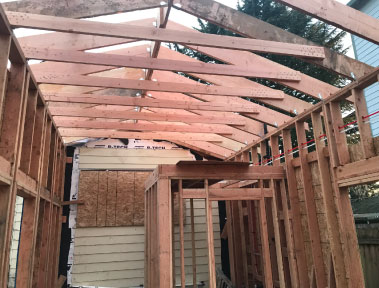1) Last week as we were planting our starts and watering our seedlings we considered how to make our garden feel more complete. Today we talked about the idea of adding signs to our space for others to better understand our community garden intentions.
At circle we discussed what makes up our garden and chose words that we might make into signs.
Word ideas:
Peas
Vegetables
Garden
Flowers
Spiders
Water
Sunlight
Separately, I’ve noticed many friends creating colors with our materials at the light table. We’ve had ongoing conversations here and there about primary colors, secondary colors and how we might create secondary colors using primary ones.
Also, I’ve been wanting to better connect our indoor classroom with our outdoor classroom.
As a result of all of the above, we brought our watercolor paints, table, and new cedar planks into our garden to paint our soon-to-be garden signs. Friends first chose to mix purple, then green, then orange. Painting outside was so much fun!
Throughout the week, we will explore possible words to add to our garden signs. We’ll take a look at the letters that make up each word and think about the sounds each letter makes.
2) We are continuing to care for our garden on a daily basis. We are also gradually filling our garden beds with vegetable and herb starts. Last week we planted eggplant, peppers, basil, sage, parsley, and oregano. This week we are planting winter starts.
Today, Phebe worked with small groups to plant beets! They used their hands as tools to clear space for the small starts and followed along with Phebe. Phebe and friends again spoke about the elements needed for plants to thrive: soil, water, and sunlight, and daily care.
What a wonderful process it is to build and grow a community garden!
3) This morning friends were greeted with an invitation make insects (and other creations) at a table filled with play dough, sticks, shells, rolling pins, and various other loose parts. Many of us were quite interested in creating insects. F said, “I need to make a thorax!”
4) We also pretended to be fruit trees on the circle today and a learned a new song:
Way up high in the apple tree, I saw three apples smiling at me.
I shook that tree as had as I could, and down came apples and mmmm they were good.
Friends then take turns coming up with various fruit tree ideas and how many they see.






































